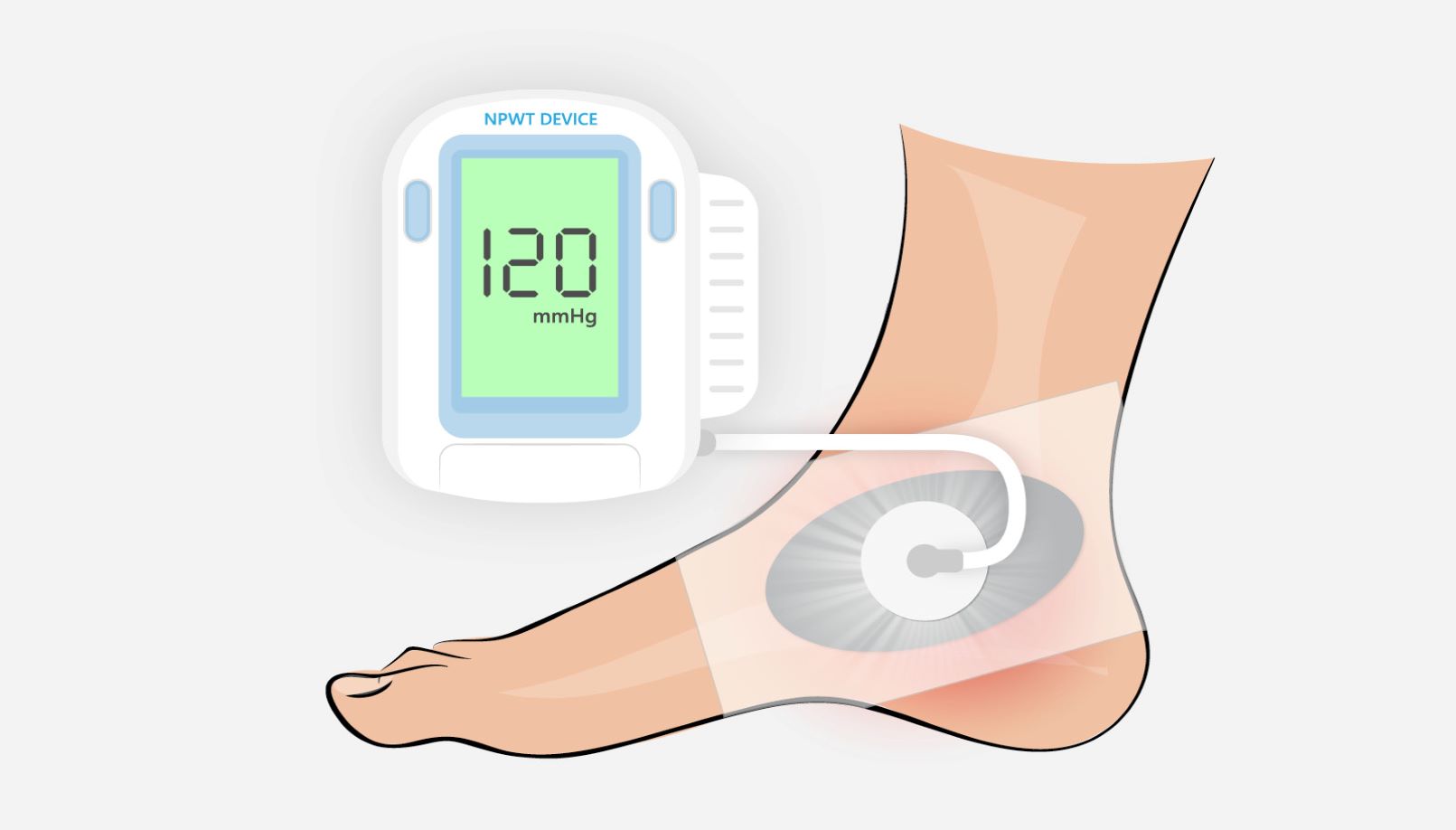
- 4 Feb, 2022
- /
- Category:
- Advanced Wound Care
The Critical Role of Dressings in Negative Pressure Wound Therapy (NPWT)
Negative pressure wound therapy (NPWT), also known as vacuum-assisted wound closure or “wound vac,” refers to a system that applies sub-atmospheric pressure to a wound surface in order to draw out fluid and help promote faster healing with reduced risk of infection. This technique has become increasingly popular in the care, treatment, and management of numerous acute and chronic wounds.[1]
NPWT helps the wound heal by decreasing air pressure around a wound. A healthcare professional applies a specialized dressing that is sealed over the wound, with a gentle vacuum pump attached to create negative pressure around the wound, which pulls the wound’s edges together to help it heal. The vacuum eliminates air pressure over the area of the wound and maintains the pressure at a rate lower than the atmosphere. This process helps clean the wound by removing bacteria while reducing swelling.[2]
The NPWT procedure generally works in the following manner: first, a foam dressing is cut to size and gently placed over the wound. A drainage tube is positioned over the foam dressing, with the first several inches covered by a transparent adhesive tape along with the surrounding healthy skin. Next, the drainage tube is connected to the NPWT unit. The unit is then switched on to suck the air out of the foam dressing, causing it to collapse to draw in the edges of the wound. Finally, the fluid within the wound is absorbed by the foam and carried into the NPWT unit’s disposable canister.
The critical importance of the wound dressing in NPWT cannot be underestimated. Commercially available NPWT systems feature multiple dressing options designed and engineered for specific wound applications.[3] An ideal construction for foam dressings used in NPWT includes options that are made from materials such as polyurethane foam, highly absorbent gel islands, and polyurethane film to provide a superabsorbent, highly breathable, and low trauma solution to manage wound exudate.
In most cases, NPWT dressings should be changed two-three times a week, but if an infection is present, they should be changed more often. NPWT treatment can last from a couple of days to several months, depending on the type of wound.
Scapa Healthcare has deep knowledge in the development and manufacturing of NPWT fixation solutions. We offer a full range of advanced materials and medical adhesives to develop advanced wound dressings and NPWT drapes to meet specific end-user needs. To learn more about how Scapa Healthcare can help you deliver the next generation of NPWT treatment, contact us directly at healthcare@scapa.com.
[1] “Negative pressure wound therapy,” Mark Gestring, MD, medically reviewed by Russell S Berman, MD, and Amalia Cochran, MD, FACS, FCCM, UpToDate, July 22, 2020.
[2] “Everything You Need To Know About Wound Vac (Negative Pressure Wound Therapy),” Wound Care Surgeons, November 2, 2020.
[3] “Negative Pressure Wound Therapy,” Intermountain Health Care, 2018
